The Royal Marines have taken a significant step in modernising their firepower, acquiring more than 1,500 Sig Sauer MCX rifles for specialist commando operations, including counter-terrorism, according to a news update.
The procurement, enabled by Edgar Brothers, is part of a £6 million investment by the Royal Navy, further enhancing the UK Commando Force’s operational effectiveness in high-risk environments.
The MCX rifle, selected under Project Hay, replaces the Colt Canada rifles previously in service and is designed to complement the Knights Armament Stoner 1 (KS-1)—the Commando Force’s new general-use weapon, introduced in 2023.
Lieutenant Colonel Olly Osborne, from the Commando Force Programme team, described the upgrade as a reflection of the Navy’s commitment to transformation in the news release:
“These rifles reinforce the commitment of the Navy and Defence to our transformation, and the value the Commando Force provides to our national and international security. This is an excellent period of investment in the force and provides great confidence through exceptional task-specific modern weaponry.”
The Sig MCX brings versatility tailored to the elite demands of the Commando Force, who operate in extreme conditions ahead of main Allied forces. The rifle has undergone rigorous testing, including force-on-force exercises and live-fire drills, ensuring commandos are fully prepared for real-world missions.
Set to be deployed alongside the Royal Navy’s Littoral Response Groups, the MCX will play a crucial role in global crisis response and special operations. These units integrate amphibious ships, aircraft, vehicles, and Commandos, forming a rapidly deployable strike force capable of operating in contested environments worldwide.
The procurement falls under Project Hay, named after Ronnie Hay, a World War II fighter ace and Royal Marine legend, known for his daring raids on Nazi-occupied territory. Hay, the only Royal Marines fighter ace, played pivotal roles in historic operations such as Dunkirk, the Battle of Britain, Operation Torch, and the Pacific campaign.


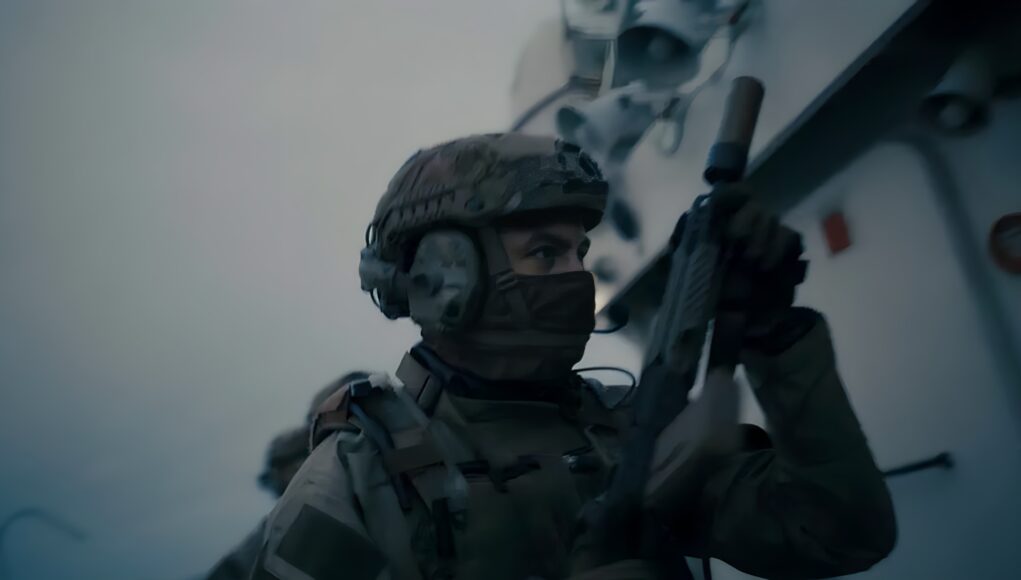

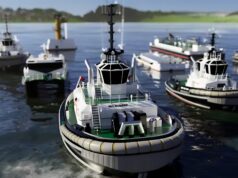
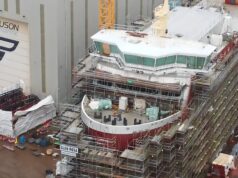
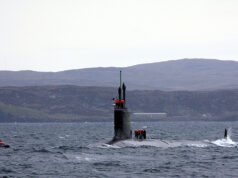
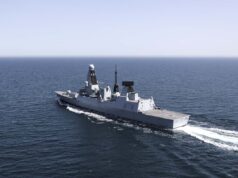

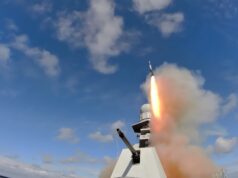
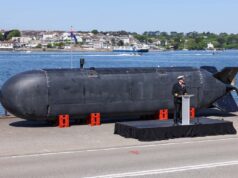
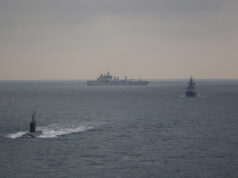
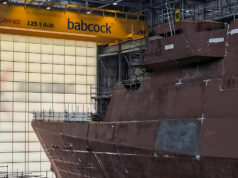

Bonus Fun Fact: Ronnie Hay (the WWII pilot after whom this project is named) was a cousin of my mother – as kids we’d go stay with him and his wife for half-term. Ronnie was invariably cheerful and chilled – He loved gardening and beekeeping..
And cutting through all the spin.
We currently have ONE Amphibious ship available.
One.
3 Commando has gone from being a deployable light infantry Brigade to a selection of S Ops forces optimised for Grey Zone just as our lack of any mass anywhere is laid bare even more than before.
So what. We do need mass but under utilising the RM and Cdo force isn’t the answer. Allowing the cdo force to realise it’s potential is only a good thing.
I have to say my first thought was ‘Really??? ANOTHER rifle??’ Didn’t they get the Colt Canada C8 like 10 minutes ago??
No, they didn’t.
I believe this rifle is mainly for Four Two.
So for the ship boarding side which is one of 42s varied specialist roles.
Possibly Four Three too, unsure.
Spares only, I believe.
“The rifle has undergone rigorous testing, including force-on-force exercises and live-fire drills, ensuring commandos are fully prepared for real-world missions.”
Yeah, so the Sig MCX was one of the weapons that was being trialed as part of Project Hunter, so naturally it’s seen a lot of testing. It was also rejected in favour of the KS-1/L403 so that raises the question why the RM are U-turning and getting the Sig?
Was it a case of ASOB getting it’s way and the RM just tagging along in ASOB’s wake?
Has the KS-1 turned out to be too expensive to equip the mass of UKCF, as I’ve suggested?
Did the Fleet Protection Group need a different rifle to be special?
Sounds a bit like the issues they’re starting to face by deciding to go down the Crye route to be different. Turns out when you pick the same stuff as USSOCOM you are somewhere near the bottom of the list for resupply – and when you can only afford to issue two sets per man that is a problem.
The Crye stuff wasn’t about “being different,” and from what I’ve heard the RM are scaled for considerably less than two sets per soldier.
Mate, what do you think it was for? I seem to remember the press release being “to solidify our unique identity…”
I know they moved for Crye as field kit predominantly for the boarding role, but for every day wear it does seem to be VERY expensive. I seem to remember our friends in H and P still wearing issue MTP when not in the field 10 years ago.
I don’t think it was for anything. I know.
In short it was acquired as an operational requirement as UKCF and ASOB moved into the SOF space and worked alongside SOF partners. And yes, initially both ASOB and UKCF used Crye as operational wear and worse PCS (not MTP, as UK SOF Crye is still MTP patterned not Multicam) in camp or when on course in the UK, just like SF used to.
Like it or not, when you work with Foreign SOF you can be as high speed low drag as you like in terms of skills, but you need to look the part, or you won’t get a chance to demonstrate what you can do.
I’ve heard it’s down to more reliable ‘post submerged’ function potential issues with Gas impingement, as opposed to short stroke piston…
I would think this is a non issue personally, but I’ve never thrown an ‘GI’ AR15 in the Sea and tried to shoot it afterwards, so what would I know….
TBF a L403 is not really a “GI” AR15 either. Honestly not sure I buy that because I’d assume that Commandos in the amphibious roles carrying KS-1’s would still be submerging their rifles from time to time. But I’m not an RM so that’s just what it feels like to me.
The ks1 was purchased as the best all rounder weapon system, ideal for the strike teams. It isn’t the best maritime cqb weapon. Hence the extra purchases that will be for 42, 43 and 47. 40/45 will be using the ks1.
Further to that, it was the other way around. It was a former RM who then went Hereford who recommended the ks1 for the RM and aided in getting it selected. Asob had nothing to do with it and typically it’s other units that just copy what the RM do.
Cool story, just a shame it isn’t remotely true.
So what happened to the Knights Armament KS-1 rifles that were purchased for the Royal Marines ?
Nothing. The RM will still have them. Some RM units will now use this.
I think the MCX (short-stroke piston) is just to compliment the CQB type roles. The CT roles typically require a smaller barrel (confined space) which the piston compliments.
The KS-1 is still a great piece of kit for other environments.
Historically 43 Commando in Nuclear Deterrent Protection used the L119A1 CQB Carbine. But it’s good I presume they are now listening to operator feedback because morale is important especially in these times.
A good tradesman should always have a few tools in his locker.
So are they going for 5.56, 7.62 or Standardise with the US new 6.8 x 51 they chose based on their Afghanistan experience ?. I wonder if we could just be a bit brave and order more to replace the L85 but build them here in UK, a lot of European countries are looking at new Infantry weapons so it could be an opportunity. 🤔
Watch this space on that one…..
It depends whether future wars are fought in the cities or outside of them? If you want a rifle to do both then 5.56 is the only option.
The M4 will be in US use for a good while yet.
Honestly, I don’t think that the 6.8 x 51 mm solution that the US Army is running with is where things will end up so I’d be hesitant for us to switch to it. It’s closer to 7.62 NATO in terms of size of cartridge, and even with the “hybrid” case construction of stainless steel and brass I imagine weight is closer to that than it is to 5.56 mm too. They’ve basically created a modernised 70s Euro battle rifle round (and rifle to fire it).
The lessons that brought us this were COIN in Afghanistan saying direct fire engagement distances needed to be out 800+ m, with a slice of concern about Russians and Chinese wearing body armour. More recent events in Ukraine seem to be pointing more and more that peer infantry fighting is unlikely to happen at range beyond 300-500 m- that is now being handled by drones and whatever indirect fire enablers that they happen to be able to get hold of. As far as body armour goes, there doesn’t seem to be a lot of it around, but I accept that it could still be an issue for 5.56 NATO.
Not against a change, but I don’t see this as the final thought. 6.8 mm instead of 5.56 mm I can believe. But the 51 mm case length and metallic casing, bringing carried bulk and weight up, that isn’t convincing to me. Some combination of cased telescopic and/or synthetic case material is where I see the next step. It’s not worth the whole of NATO moving away from the established 5.56/7.62 combination en masse for much less than a major step forward across the board.
Just my opinion, and I’m hardly the most informed.
Tbis is great but one issue. How are they going to out rounds on target, if they have no Assault ships to land from. Stop the decommisioning of the 2 Albions. We are going to need them.
They can deploy from any rn platform and can also be flown and driven from any land base. You don’t need an amphibious assault ship to deploy commandos. You need that for one type of role, however they have many roles.
Interesting choice as the Sig Sauer MCX rifle is the basis of the US Army’s new standard, the Sig Sauer XM7.
Danielle Mandelli you are correct it will be for four two and sbs. The sa80a2 and m16 carbine aren’t great after being in water and it’s the same for sand.
The should replace the LMG and GPMG as those are weapons that have been active since WW2.
They also have L129A1, UGL and Sig Sauer 9mm pistol.
L85A2 and C8, not sure why you think L85 isn’t great after being in the water, it’s a short stroke gas system like the Sig.
LMG has been out of service for nearly a decade, the L7 (GPMG) was adopted in 1957, which notably is not WW2.
Sig Sauer 9mm was replaced by the Glock 15 years ago.
I suspect if you told me you would then have to kill me but what do you do Dern? Your range of knowledge is pretty impressive.
I mean I’m not exactly secretive about what I do, I’m a British Army JNCO. I tend not to go into more detail than that mostly because with the way my career has gone it would be pretty easy to pin point me. (Though I’ve apparently said enough that Daniele has a shortlist of units he thinks I work for). It’s not really a “I can’t tell you who I am.” and more of a “I don’t really want to paint a target on my back for my chain of command,” even though I try to keep my posting to things that can be found open source.
I’m also mildly neurodivergent (I’m sure that will shock absolutely nobody who has seen the orbat charts I produce) and am lucky enough that my special interest and my work life overlap somewhat, which kind of helps my military knowledge base.
Well I appreciate your special interest, it is always enlightening reading your posts which clarify some pretty confusing threads to a relative newcomer. (I spend a lot of time looking up acronyms LOL). Its a wise move keeping that target off your back and I hope you have a long, distinguished and fulfilling military career. IMHO JNCOs’ are the bedrock of the armed forces.